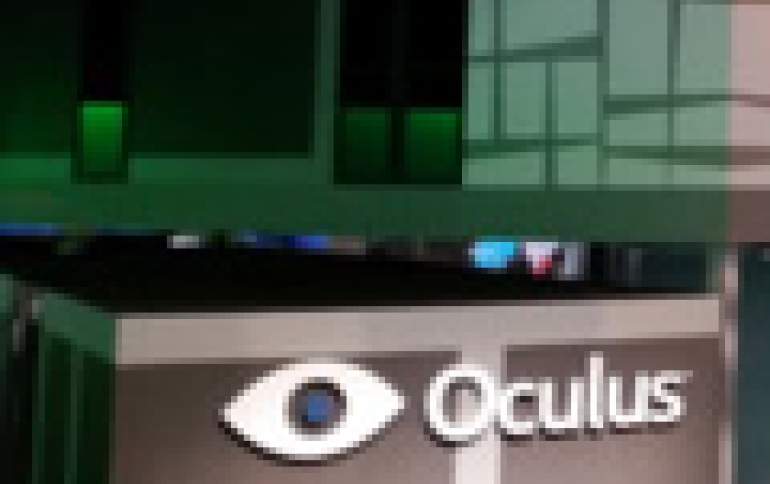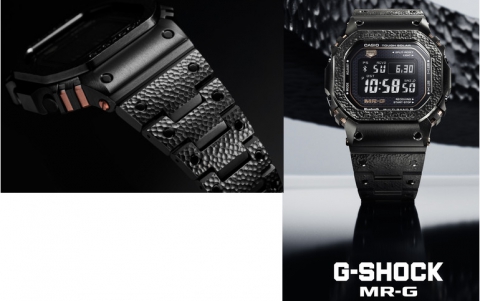
Oculus SDK Brings Asynchronous Timewarp to Windows
Version 1.3 of Oculus' PC software development kit (SDK) has been released, and adds support for asynchronous timewarp, (ATW) a rendering method that reduces latency and prevent image judder caused by dropped frames. In VR, dropped frames can occur when a frame takes too long to render and misses a refresh of the head-mounted display, causing the same image to be displayed repeatedly. The effect is jarring and destroys the sense of presence that is essential to VR. While there are a variety of ways to address this problem (including application tuning, reducing image quality, or upgrading to a more powerful graphics card), Oculus’ ATW solution is designed to be automatic and transparent to users as well as to developers.
ATW works by performing an image warp on the last frame that has finished rendering, to correct for any head movement that takes place after the rendering work is initiated. This warping operation is executed on the GPU using a compute shader, and can be scheduled asynchronously with other rendering tasks on hardware that supports that capability. Scheduling this operation every frame ensures that there is always an updated image available to display, even if it is only a warped version of a previously displayed frame.

While great in concept, execution of the ATW task must be timed carefully in order to be useful. Ideally it should happen as late as possible in a frame interval, allowing just enough time for it to complete before the next display refresh. If it happens too early, then additional head movement can occur before the display refresh, causing a noticeable lag. If it happens too late, then it may miss the refresh and allow visible juddering to occur.
Oculus said it "took a lot of work" to get the feature working properly on PC graphics hardware, since graphics cards can provide high throughput but not fine-grained preemption. The company worked with Microsoft, Nvidia, and AMD to tune "OS GPU scheduling, GPU command processor microcode, and GPU kernel driver design" to improve ATW performance. Oculus says Nvidia's VRWorks and AMD's LiquidVR driver extensions both help ATW work better.
AMD is promoting the idea of a "quick response queue" in order the renderer to know that a given task will be able to start and complete within a certain time frame. Putting the ATW shader on this queue gives it priority access to the GPU’s compute units, making it far more likely to complete before the next refresh even when it is submitted late in each frame interval. And since it doesn’t need to pre-empt other graphics tasks already in flight, it allows the GPU to start working on the next frame quickly.

Have in mind, that ATW only corrects one type of latency right now - orientation, or head direction. It doesn't correct for changes in head position, which can lead to a variety of artifacts that harm the VR experience. The company cautions that ATW should be looked at as last-ditch insurance in cases where an application can't maintain a 90Hz refresh rate, rather than a method for getting around lower frame rates. Developers still need to work hard to ensure their VR apps can consistently run at 90 FPS.
For the best ATW performance, Oculus says users should be running Windows 10 build 10586.164.
Oculus Rift On Sale
Facebooks' Oculus started shipping its Rift headsets from Monday. The first of the pre-orders will start shipping from mid-week, Oculus said.
The headgear, priced at $599, comes with a remote, an audio system, a sensor and an Xbox One wireless controller.
Oculus said there were more than 30 games available on the Oculus Store and it would soon add feature-length movies and more content.
Early reviews of the new device have been mixed.
Steven Tweedie of Business Insider was positive in his review of the Rift, relishing the greater presence he felt in both games and narrative stories. But he noted its hefty price tag "is undoubtedly the biggest thing keeping more people from getting the chance to try virtual reality."
Time's Lisa Eadicicco called the Rift "expensive, complicated, and totally wonderful." She added, "It's brilliant. It's fascinating. It's not perfect, but it's only getting started."
Several reviewers, including IGN's Dan Stapleton, wrote that because the Rift doesn't come with controllers that allow for separate actions by each hand, the Rift will suffer compared with the HTC Vive, which will have such controllers included when it comes out next month. Oculus expects its "Touch" controllers to come out later this year.
Nathan Olivarez-Giles of The Wall Street Journal wasn't wowed by all the 30 games that were available at launch.
And he wrote that nausea, a consistent complaint among VR headset users, was real.





















